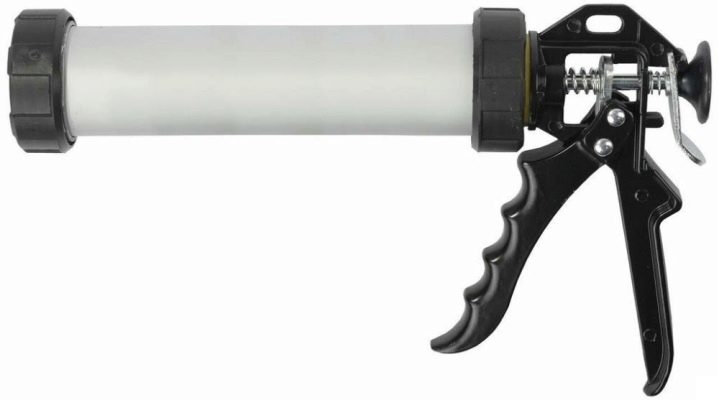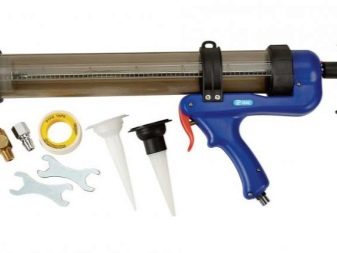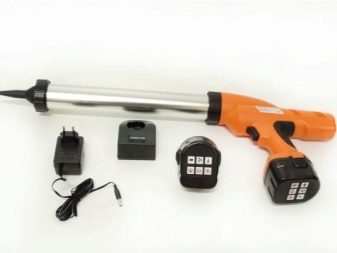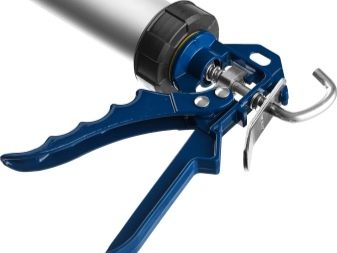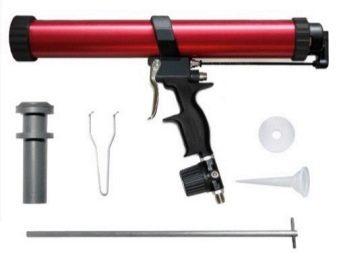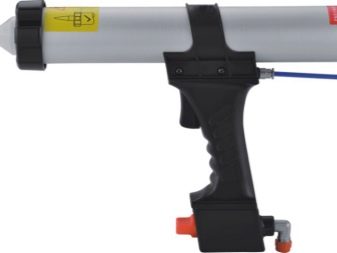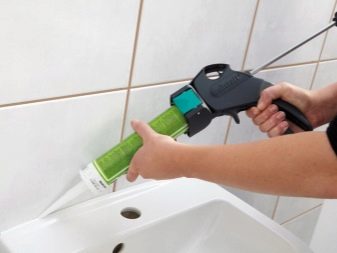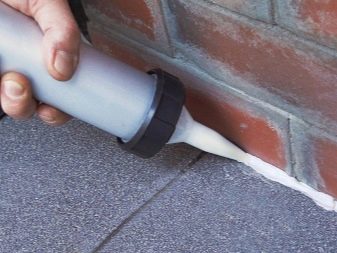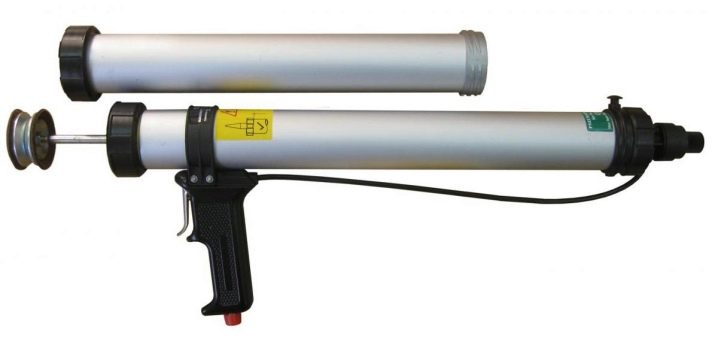Sealant Guns
Choosing a gun for sealant is sometimes a real problem. You need to buy exactly the option that is ideal for construction and repair work. They can be semi-corpus, skeletal, tubular, and also differ in volume and functionality. Professionals choose closed enclosures.
Appearance
The closed gun for sealant is considered universal. It is for this reason that professionals love him. It is also often called a syringe. It has a closed housing and a piston with a trigger for squeezing the material. The body can be aluminum, steel, glass or plastic.
To improve the convenience of work, you can additionally purchase:
- the various nozzles facilitating work in hard-to-reach spots;
- backlit nozzle;
- cleaning needle;
- punch, designed to remove the frozen mixture.
In professional pistols, there are additional features:
- for fixing the trigger during long work;
- for protection against leakage;
- to adjust the speed of extrusion, which is very helpful in work requiring high precision.
A sealed seal gun can be mechanical, pneumatic, battery or electric.
Special features
Full-body guns have a number of features due to which builders-assemblers choose them:
- fully enclosed body with a reliable base;
- the possibility of pressure relief, which eliminates leakage of sealant, which creates a lot of inconvenience;
- filling the gun with sealant can be made manually from the container in which it was mixed;
- complete with a pistol sell tips (nozzles) for more convenient use;
- a professional pistol holds from 600 to 1600 ml of a sealing compound, which significantly reduces its need for refueling.
Application
Full-body guns are filled with both plastic tubes with a sealant and sealing compounds in soft packaging.Sealants that must be mixed before use, or prepared by yourself, can also be refilled into such pistols.
The procedure for doing work is quite simple.
- Training. On the tool, you need to unscrew the nut fixing from above and remove the spout, the stem is also pulled back to the stop. At this point, remove any sealant from previous work.
- Refueling. In plastic tubes, they simply cut off the tip of the spout and insert it into the body. If you have a sealant in a soft package, then you will need to remove one of the metal plugs with a side cutter and also insert it into the gun. You can fill the tube with a freshly prepared sealant with a spatula, or suck it out of the container as a syringe.
- Job. Squeezing the sealant into the seam occurs by pressing the trigger of the gun. If you need to suspend work, and the tool is mechanical, then you need to move the stem back a bit, this will help avoid arbitrary leakage of paste. The sealing material is applied evenly, completely filling the seam.
- Treatment. After completion of work, if necessary, the seams are rubbed with a rubber spatula or sponge.
- Following actions. If you used a plastic tube and there is a sealant in it, then close the spout with the appropriate cap. Sealant residues from soft packaging or freshly prepared composition must be removed. You also need to remove drops of the composition accidentally caught on the body. After hardening, the sealant is extremely difficult to remove, which may result in the tool becoming unusable.
Security measures should be observed. Protect eyes and exposed skin from sealant. Also work better in a well ventilated area and with a respirator.
Purchase
Price rating depends on the size of the body, brand and type of gun. The instrument of the Japanese brand Makita costs an average of 23 thousand rubles, and the Soudal brand already has 11 thousand. Their volume is 600 ml. A similar version of the English brand PC Cox costs only 3.5 thousand rubles. But the components for it will have to buy separately. But guns brand "Bison" will cost you around 1000 rubles with all the components.
When choosing a gun for a sealant of a closed type, it is necessary to focus not on the brand, but on its functionality and volume.
For information on how to use a closed sealant gun, see the following video.
